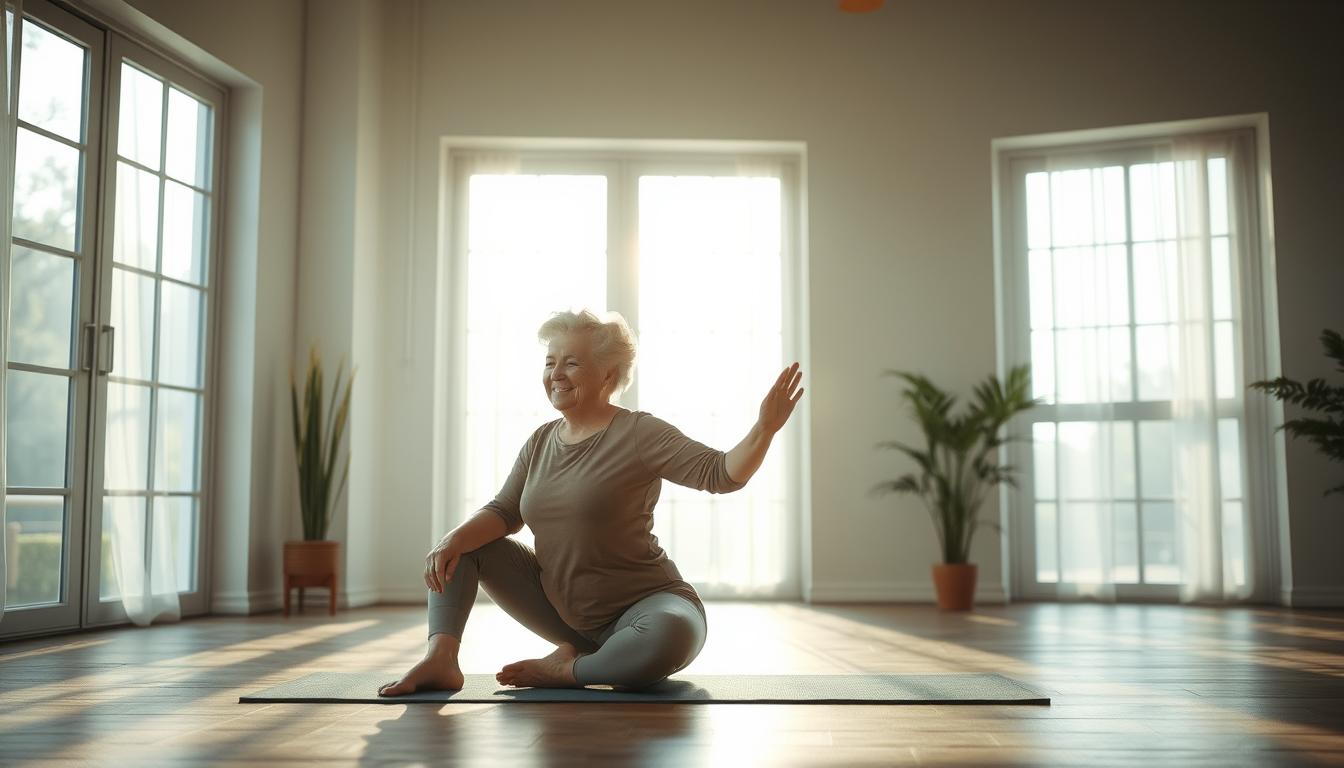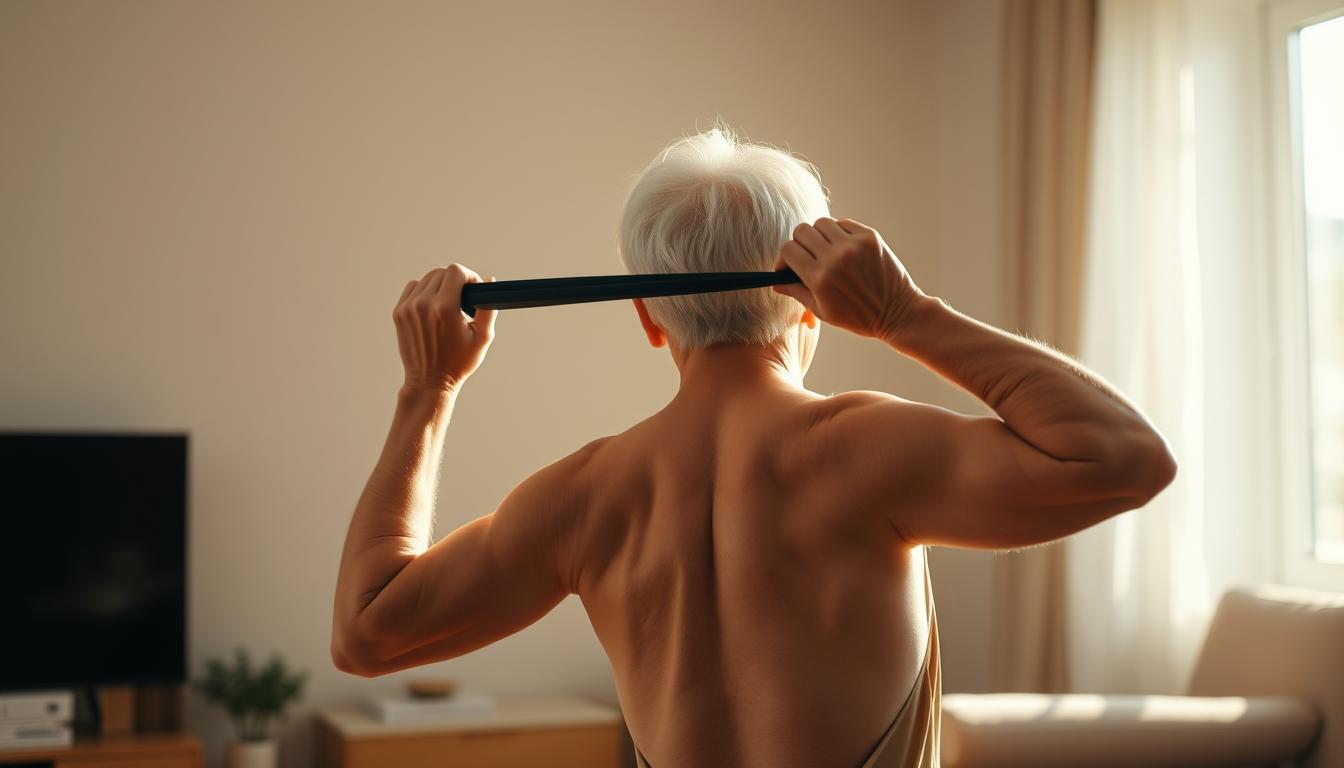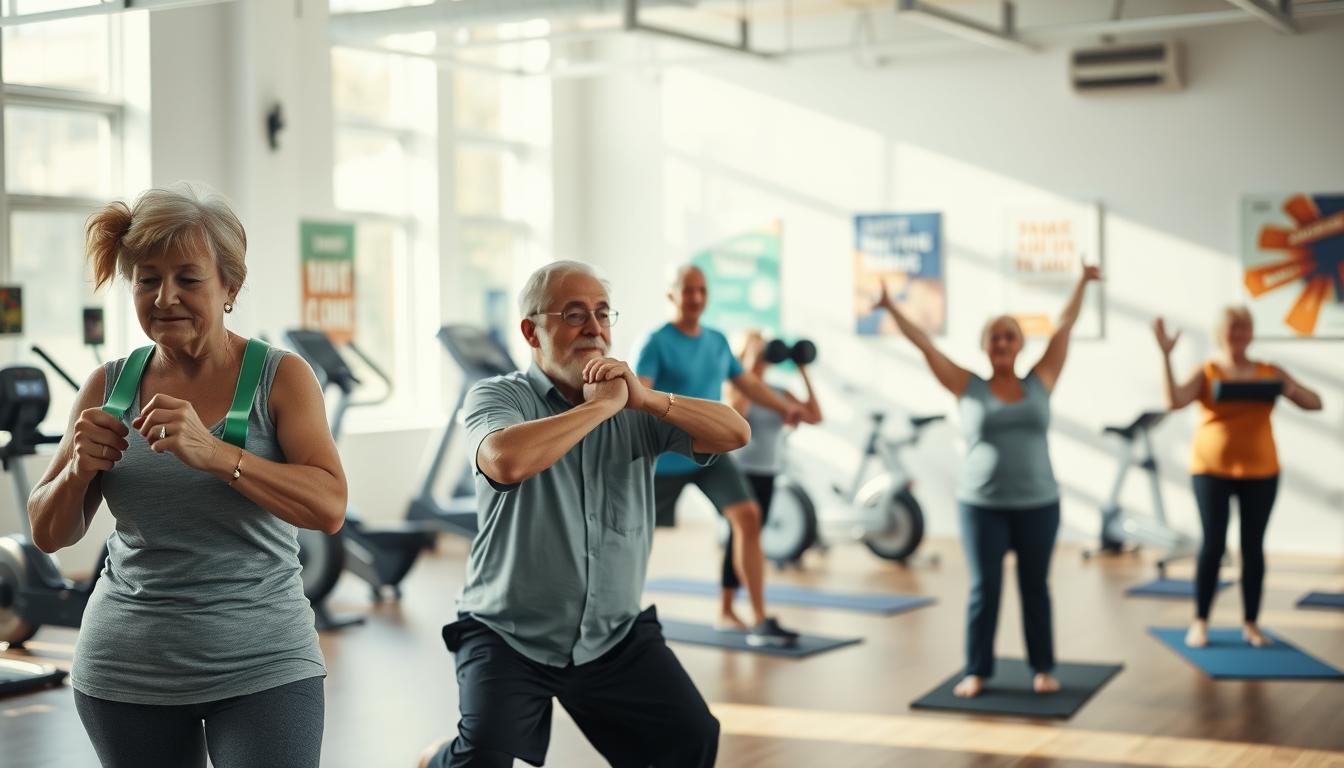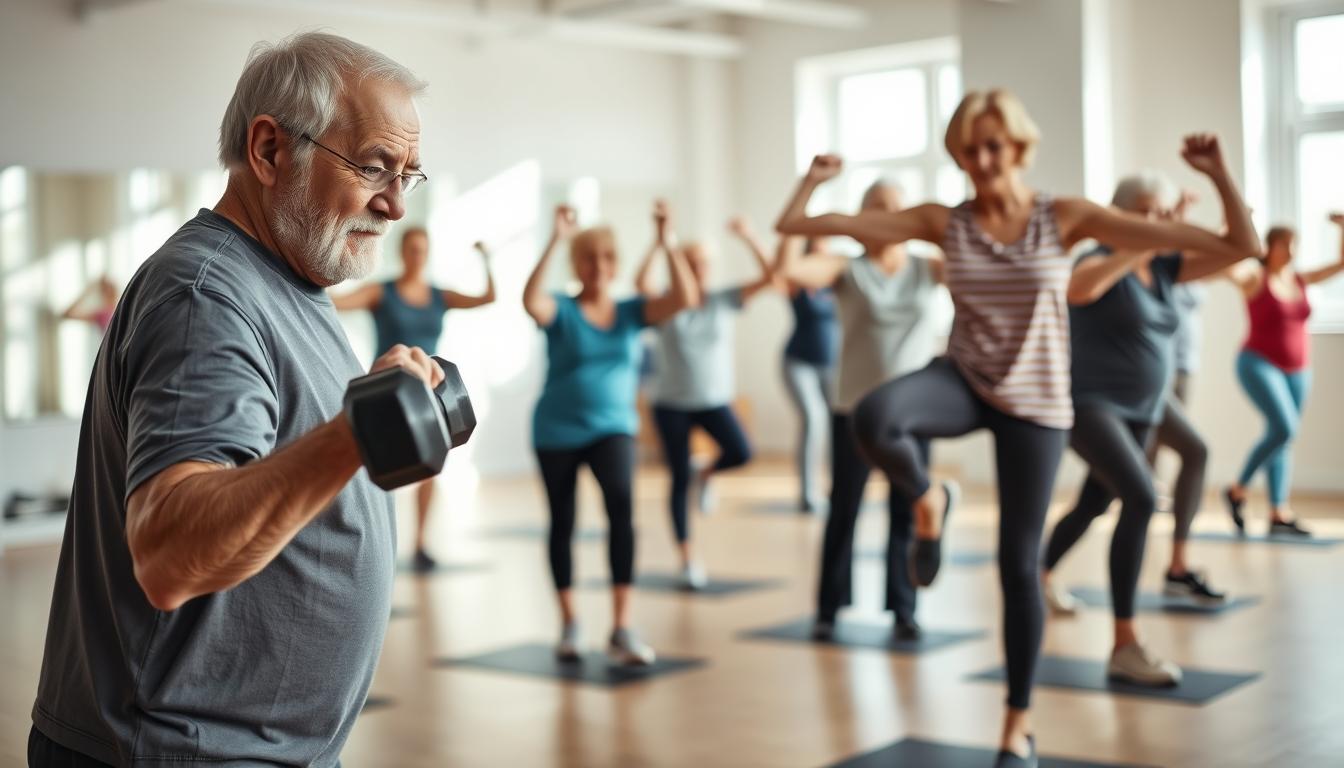Your bones aren’t fossils – yet. Gentle workouts like brisk walks or tai chi can strengthen bones better than chugging milk shakes. I’ve seen 70-year-olds outpace gym bros using nothing but their body weight and gravity. Seriously, your skeleton’s listening: move wisely, and it rebuilds itself.
Think of bones like a retirement account. Every step deposits calcium. Every resistance band pull earns compound interest. My neighbor Ethel swears by heel drops while microwaving dinner – “two birds, one osteoporosis exercise!” Her spine scans? Chef’s kiss.
Here’s the kicker: bones thrive on routine, not heroics. Dancing in socks counts. Arm circles during Jeopardy! counts. Even shifting your weight while brushing teeth fires up bone-building cells. I’d rather you shuffle through grocery aisles than risk a Zumba faceplant.
Let’s get real – your back isn’t 25 anymore. But that crinkly sound when you bend? Not normal. This isn’t about becoming flexible as a yogi. It’s about staying vertical long enough to argue with grandkids. Next up: my foolproof bone-boosting plan that even works if your idea of cardio is channel-surfing.
Breaking Down How Exercise Builds Bone Strength
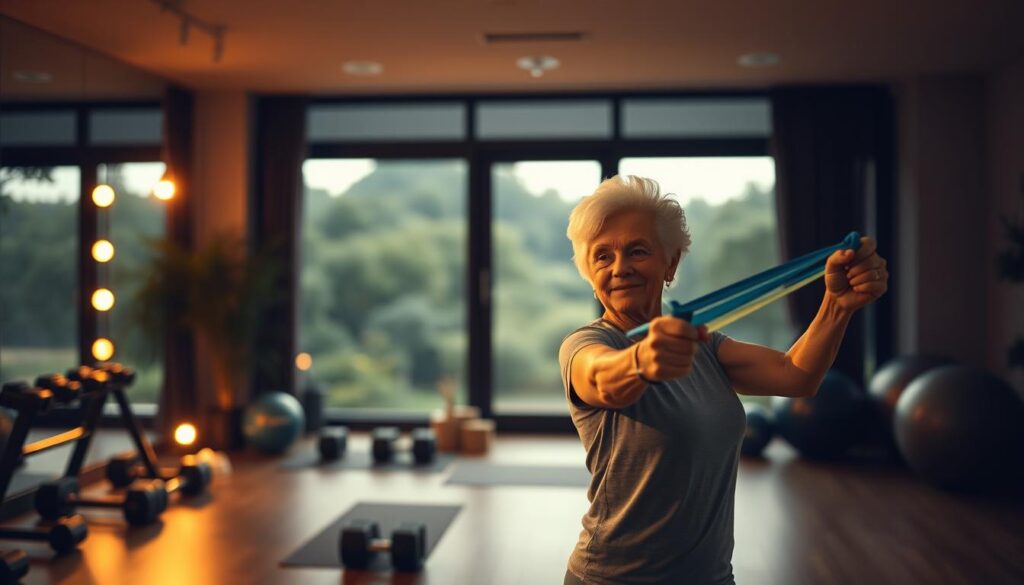
Your skeleton isn’t static—it’s a dynamic framework that remodels itself based on demand. When you move with purpose, bones experience tiny stresses that trigger cellular construction crews. Think of it like texting your body: “Hey, we need stronger scaffolding here!”
Bones in Action: How Movement Stimulates Renewal
Here’s the science simplified: weight-bearing activities create micro-cracks in bone tissue. Your body rushes to repair them, laying down fresh calcium deposits. A 2023 study showed that just 10 minutes of brisk walking daily increases bone density by 1.2% over six months. That’s compound interest for your hips and spine.
| Activity Type | Impact Level | Bone Benefit |
|---|---|---|
| Stair climbing | Moderate | Strengthens legs & hips |
| Water aerobics | Low | Maintains spine density |
| Gardening | Passive | Minimal remodeling |
Active Routines versus Passive Movement—Real Differences
Folding laundry counts as movement, but it won’t rebuild your femur. Structured exercise programs win because they:
- Target weak areas (hello, wrists!)
- Progressively challenge bones
- Reduce fall risks through balance work
My client Martha, 68, swapped her daily mall walks for resistance band sessions. Her latest scan? “Denser than my Thanksgiving gravy,” her doctor joked. That’s the power of intentional movement—your bones can’t ignore it.
Low Impact Exercises for Osteoporosis in Seniors
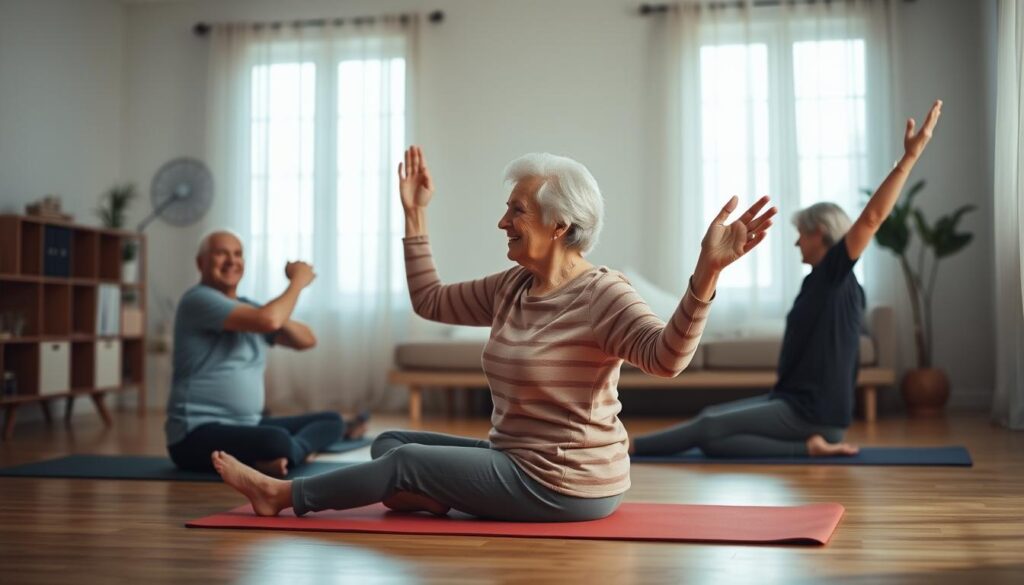
Your skeleton’s like a vintage car – it needs regular drives, not demolition derbies. Gentle workouts trick bones into rebuilding without rattling loose parts. I’ve watched clients reverse bone loss doing tai chi in slippers and water aerobics in pool noodles. The secret? Consistent pressure, not brute force.
Why Low Impact Works Without the Strain
These routines are the Swiss Army knives of bone health. They:
- Keep joints happier than a golden retriever in a tennis ball factory
- Build muscle armor that catches you during stumbles
- Deliver bone-building vibrations like a tuning fork
Take dancing versus jogging. Both get hearts pumping, but salsa steps spare hips from concrete punches. My 72-year-old aunt swapped running for elliptical sessions – her hip density now rivals her stand mixer’s durability.
| Activity | Intensity | Bone Benefit |
|---|---|---|
| Elliptical training | Moderate | Boosts leg density |
| Tai chi | Low | Improves balance + spine strength |
| Water aerobics | Mild | Protects joints while loading bones |
These movements work because they’re sneaky. You’re having too much flapping pool noodles to notice you’re literally exercising your skeleton. Next week, we’ll layer in resistance bands – the cherry on top of your bone-building sundae.
Boosting Bone Density With Resistance and Muscle-Strengthening
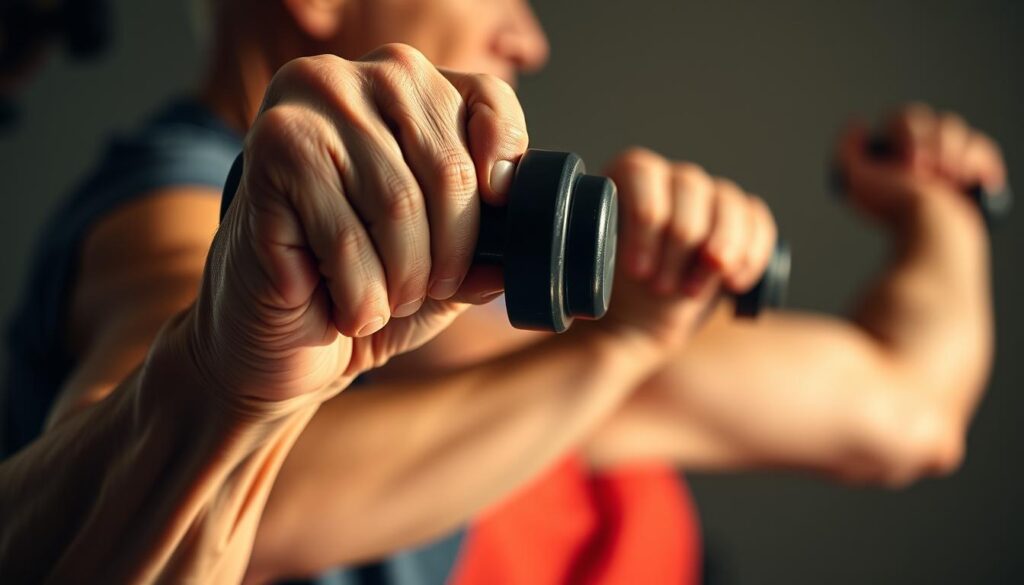
Your bones are under constant renovation—no hard hats required. Resistance training acts like scaffolding for your skeleton, creating tiny stressors that shout: “Rebuild here!” I’ve watched clients transform brittle frames into resilient structures using nothing but bands and smart progressions. The secret? Gradual challenges that trick bones into outgrowing their limits.
Using Resistance Bands Effectively
Think of bands as adjustable spices—they add flavor to movements without overwhelming your joints. For band-assisted deadlifts:
- Stand on the center of a looped band
- Grip handles at hip height, knees slightly bent
- Hinge forward like you’re closing a stubborn car door
This loads your spine and hips safely. Wall presses work similarly: lean into a wall with bands around your back, pushing until your shoulder blades whisper, “We’re awake now!”
Progressive Muscle Training Tips in Daily Practice
Progression isn’t about lifting cinderblocks. Start with soup cans during TV commercials. Upgrade to gallon jugs when brushing teeth feels easy. A client added ankle weights while tending her golf fitness garden—her wrist density jumped 8% in six months. Your mantra: “Challenge, don’t strain.”
Targeted Movements for Maximizing Bone Impact
Certain exercises deliver bone-building mail directly to your skeleton’s doorstep:
| Movement | Target Area | Progression Tip |
|---|---|---|
| Heel raises | Ankles/calves | Add band resistance |
| Seated rows | Upper back | Use thicker bands |
| Step-ups | Hips/thighs | Hold weights |
These moves work because they mimic real-life actions—lifting groceries, climbing stairs, reaching high shelves. Your bones respond best to practical strength, not gym theatrics.
Crafting a Routine That Improves Balance and Prevents Falls
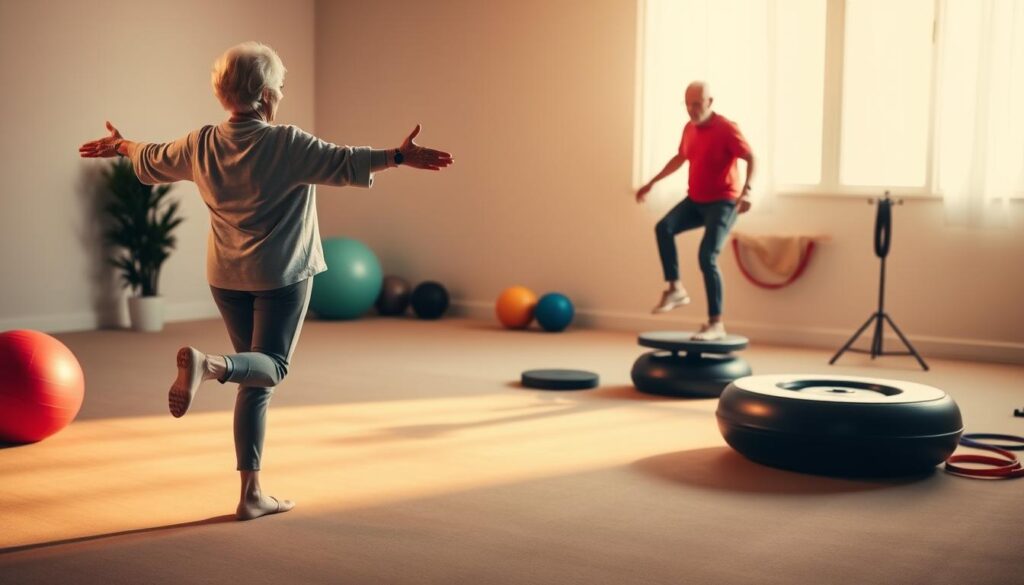
Your stability isn’t a lost cause—it’s a skill you can rebuild like muscle memory. Think of balance as your body’s GPS: when it’s sharp, you navigate curbs, slippery floors, and uneven terrain without faceplanting. I’ve watched clients transform wobbly steps into confident strides using drills you can do while waiting for coffee to brew.
Real-World Balance Drills for Steady Steps
Try these moves during daily routines:
- Toothbrush T-stance: Stand on one leg while brushing (swap sides halfway)
- Grocery aisle tightrope: Walk heel-to-toe between shelves, hands out like a trapeze artist
- Microwave calf raises: Lift heels while reheating leftovers (bonus points for single-leg)
Your core and leg muscles act like shock absorbers. Strengthen them, and your body becomes its own safety net. A 2024 study found seniors doing daily balance drills reduced fall risks by 37%—better stats than most prescription meds.
Techniques That Keep You Upright and Confident
Weight-bearing isn’t just about lifting—it’s how you distribute pounds through your frame. Stand tall like a puppet string’s pulling your head skyward. Feel your feet root into the floor? That’s your foundation locking in.
| Drill | Muscles Worked | Daily Application |
|---|---|---|
| Chair-assisted squats | Thighs/glutes | Rising from couches securely |
| Wall push-offs | Shoulders/core | Steadying against handrails |
| Toe taps | Ankles/shins | Navigating stairs confidently |
My golden rule: “If you’re stable enough to argue about politics, you’re stable enough to train balance.” Start with 30-second challenges during TV ads. Progress to brushing teeth on a foam mat. Your future self will thank you when you catch that rogue rug before it catches you.
Step-by-Step Guidance on Safe, Edgy Workouts
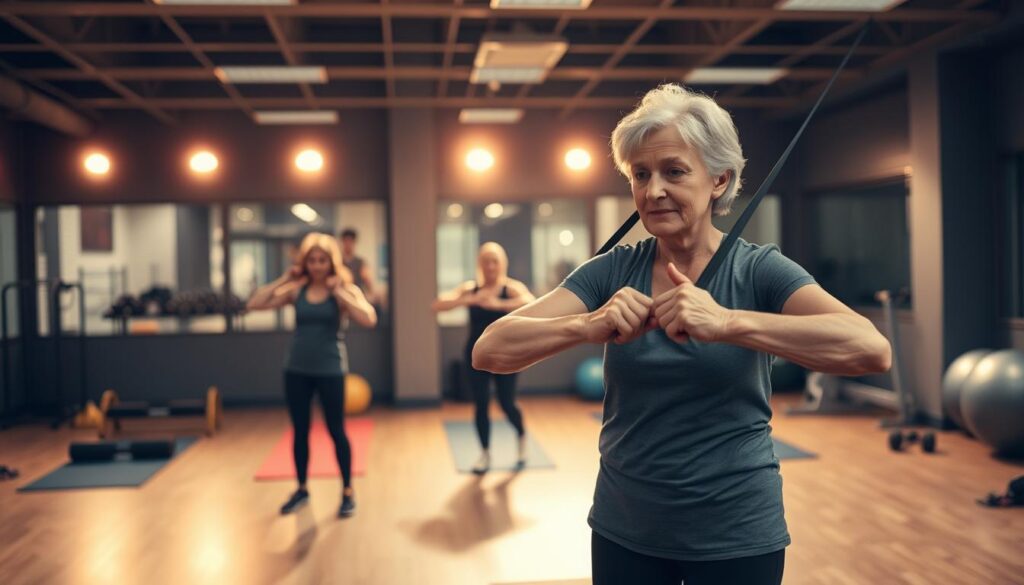
Your workout shouldn’t be a tightrope act—unless you’ve got a safety net. Here’s my blueprint for pushing limits without snapping bones. We’re talking controlled rebellion against fragility. Let’s get tactical.
Step 1: Ground Your Feet Like Tree Roots
Start barefoot. Feel those toes spread? That’s your foundation. For band work, plant heels hip-width apart—imagine squishing grapes under each foot. This stance prevents twists that invite fractures. Pro tip: Press through all three corners of your feet (heel, big toe, pinky toe) during lifts.
Step 2: Band Hacks for Spine Support
Loop a resistance band around thighs during chair squats. Feel the burn? That’s your core bracing your spine like a corset. For rows, anchor bands to a doorknob. Pull elbows back until shoulder blades kiss. My client Stan calls this “posture CPR”—it resurrects alignment.
| Movement | Target | Safety Hack |
|---|---|---|
| Heel-to-toe walks | Balance/feet | Use wall for support |
| Seated band rows | Upper back | Keep ribs stacked over hips |
| Side-stepping squats | Hips/thighs | Bend knees over toes |
Step 3: Progress Like a Tortoise, Not a Hare
Added five pounds? Great. Now hold it for two weeks. Your bones need time to cement gains. I’ve seen folks combine golf fitness drills with balance work—swing practice doubles as rotational training. Genius.
Remember: Edgy doesn’t mean reckless. If your body whispers “maybe,” listen. Tomorrow’s workout always beats yesterday’s heroics. Now go rattle those bones—safely.
Real-Life Strategies for Home and Gym-Based Training
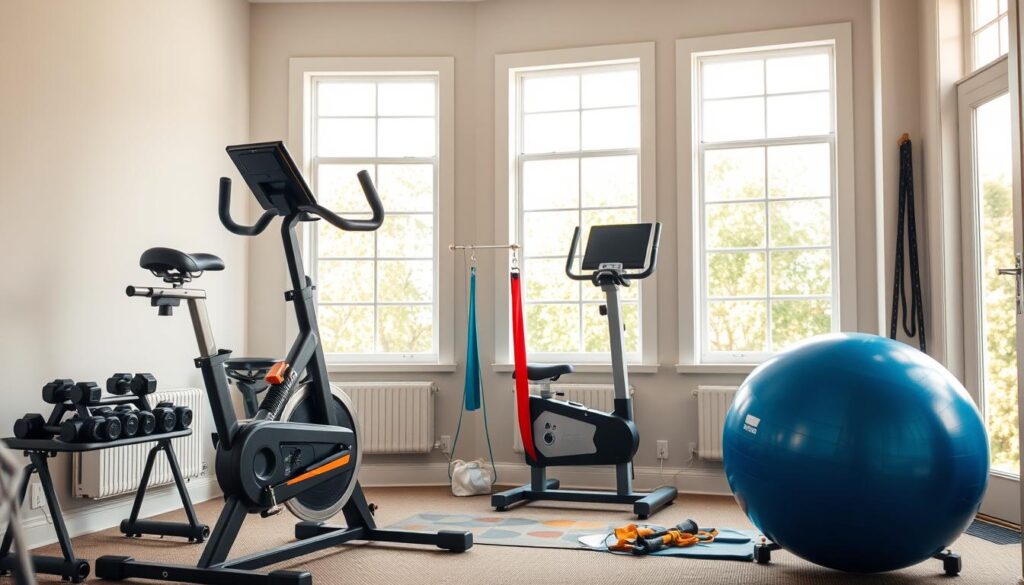
Your living room doubles as a bone-building lab—no white coat required. Let’s transform everyday spaces into muscle-forging factories using what you’ve already got. I’ve helped clients repurpose laundry rooms into balance studios and turn patio chairs into resistance stations. Here’s how to hack your environment.
Safe Home Setups for Senior-Friendly Routines
Clear a 4×4 foot zone—that’s your new bone-boosting arena. Anchor furniture to walls. Use yoga mats for grip. My go-to setup:
- Resistance bands looped around sturdy chair legs
- Light weights (start with 2-5 lbs) stored near the TV
- Wall space marked with painter’s tape for alignment checks
Got stairs? Perfect. Three daily trips up-and-down count as leg-saving workouts. Just hold the railing like you’re shaking hands with stability itself.
| Home Setup | Gym Alternative | Bone Benefit |
|---|---|---|
| Soup can curls | Dumbbell presses | Arm/wrist strength |
| Step-ups on stairs | Leg press machine | Hip density |
| Doorway stretches | Cable rotations | Spine support |
Structured exercise programs work because they’re sneaky. Slot 10-minute sessions between shows or while coffee brews. A client does heel raises during crossword puzzles—her scans now show shinbones denser than mahogany.
Stuck for time? Pair movements with daily tasks:
- Squat while loading dishwasher
- Lunge toward the fridge (grab low-fat yogurt for bonus points)
- March in place during phone calls
Your knees will thank you for controlled movements. Remember: Consistency beats intensity every time. Now go rearrange those end tables—your skeleton’s waiting.
Signing Off on Staying Strong—Your Bone Health Blueprint Continues
Your bone health journey isn’t a sprint—it’s a Sunday drive with occasional pit stops. Keep that density growing by mixing balance exercises with daily movement snacks. Stand on one leg while microwaving soup. Do heel raises during commercial breaks. Every wobble counts as progress.
Research shows consistent weight-bearing activities—like gardening or mall walking—slash fall risks by nearly 40%. Your legs become shock absorbers, your spine a reinforced column. My 81-year-old client Barb combines chair squats with crossword puzzles—her hip scans now rival her grandkids’ energy levels.
Three non-negotiable habits:
1. Rotate activities (water aerobics Monday, resistance bands Thursday)
2. Track small wins (held a tree pose for 10 seconds? Victory!)
3. Laugh at stumbles—they’re proof you’re pushing limits
Your blueprint evolves as you do. Found a new park path? That’s fitness innovation. Discovered wall push-ups feel better than floor ones? Brilliant adaptation. Keep tweaking, testing, and trusting your body’s wisdom.
Now go rattle those bones—gently. The road to resilience has no finish line, just mile markers of strength. Your next move? Literally.
